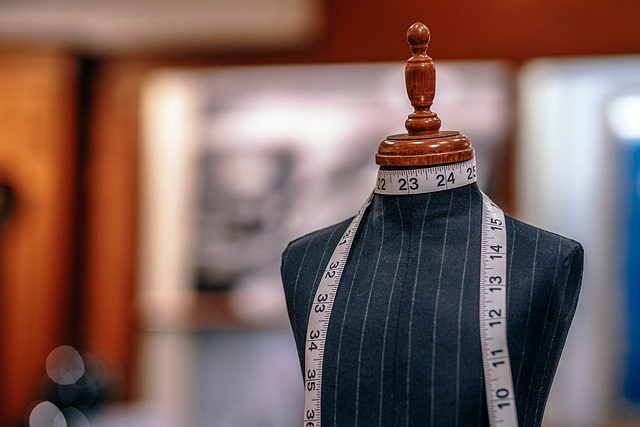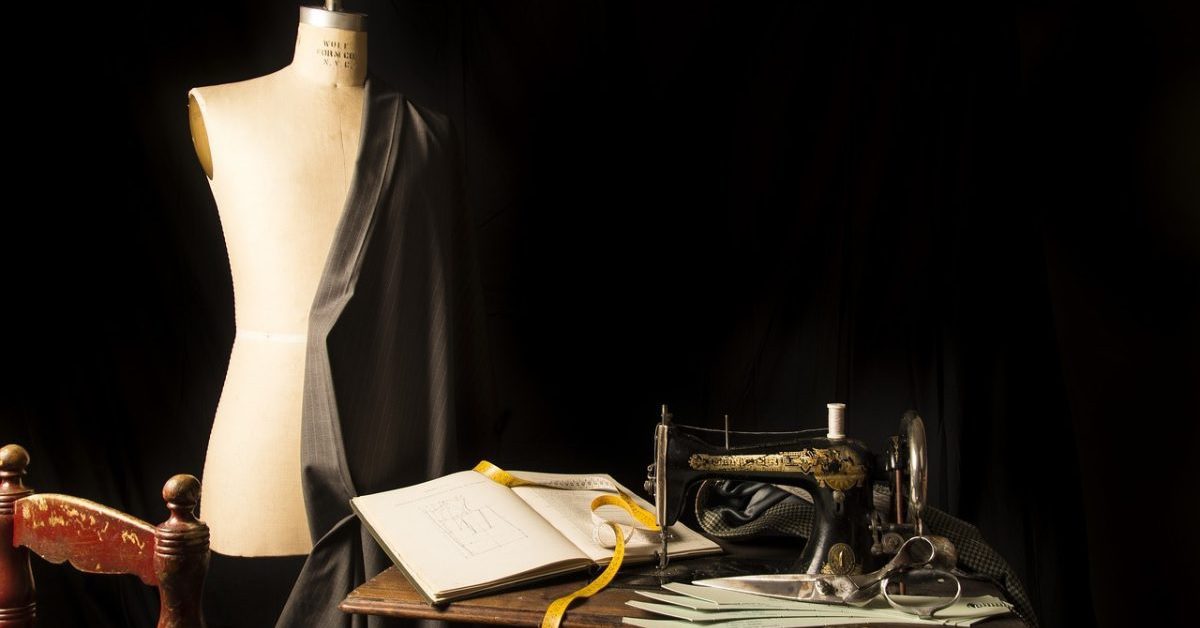If you are new to sewing, you might think that a dressmaker’s mannequin is an essential part of the creation process. But the truth is, a dress form is a ‘nice-to-have’ item rather than a ’must-have’. You can absolutely complete the garment construction process without relying on one.
Tips for Tailoring Without a Dress Form
Despite being a valuable tool to hang and size clothes, a sewing mannequin will never quite take the place of a human model. It doesn’t matter how adjustable your mannequin body is. It’ll never be able to lift its arms and tell you that the dress is too tight on the shoulders. It can’t twirl around so you can see how the skirt dances around the body. And won’t be able to reach behind and tell you whether the zip is so low that it is impossible to close independently.
That being said, there are many reasons why you might like to purchase a dressmaking mannequin at some point in your sewing journey.
The Advantages of Using a Mannequin for Sewing
- They provide a satisfactory alternative to the human form: While it is still helpful to test the garment on a human body – preferably that of the person who will be wearing the item – the mannequin can be helpful in between fittings to get the shape and style correct.
- You can stick pins in a tailor’s dummy without damaging it: This allows you to take unfinished pieces and arrange them in such a way that you can see how the finished garment will look. Simply pin the fabric to the mannequin!
- Measuring is easier on a dress form: Of course, you can measure pieces on a table, but it is a much easier process when they are on the mannequin, allowing you to see exactly where the garment starts and ends on a body.
- Mannequins won’t complain about how long it takes to fit a dress: These durable sewing tools are made for all-night fitting sessions and endless deliberations about seams and darts. While fitting on a human is best for the perfect finish, details can be better completed on a patient dummy.
- They make you look and feel professional: Whether you are just starting on your sewing journey or you have been making clothes for years, there is something about a mannequin for clothes that makes you more capable and qualified to be a seamstress.
What Makes a Good Tailor’s Dummy?
If you have decided to go ahead and purchase a mannequin, it is important you get one that will withstand the demands of dressmaking for many years.
There are many different schools of thought when it comes to choosing a dress form that will serve you well. Mannequin Mall suggests a cloth-based body is the most important feature your mannequin can have. This is simply because hard plastic or acrylic mannequins aren’t great for pinning – you need a good thick layer of cloth to hold pins safely and securely without damaging the surface.
You should also select a torso form rather than a full-body mannequin. The head and limbs are redundant when using a mannequin for sewing since they serve no useful purpose in the creation process. A torso form is lighter, easier to transport and store, and far easier to wrap half-made garments around.
Do I need a Dress Form to Make My Own Clothes?
If you intend to make clothes just for yourself, you should try and find a mannequin with measurements close to yours. You should note that this is not the same as dress size – measurements are more specific and useful when getting a perfect fit. There is an excellent guide to help you get this right on the Sew Much Easier website. If you are sewing for a range of other people with different body shapes and sizes, a generic dress form will be fine, but you’ll need to do more human fittings.
Take note of adjustor fittings. These come in various styles, so you might want to try out a few different ones to see what feels nicer to you. Some adjustors are presented as wheels, while others are dials. The adjustors are a good indicator of the quality of the entire mannequin, which is why this is an important aspect to get right.
The final element that will affect your decision is probably the most personal one: the mannequin stand. Will you choose one with wheels or one with solid, wooden legs? It is a good idea to find a stand that includes a hem marker so that you can adopt a unified approach to skirt length.
How Do You Make a Dress Without a Mannequin?
If you have weighed up the advantages and disadvantages of dressmakers’ mannequins and decided to go ahead and make your dress without one, that is a very reasonable option.
Are you are making a dress for yourself? You will want to take your measurements several times – you know the saying, ‘measure twice, cut once? It comes from a place of experience!
Then create your pattern according to your measurements and get started. Whenever you can, try the dress on to see what is working and what is not, and adjust as necessary. When your creation is finally brought to life, you can take photos and model your dress yourself rather than using a mannequin.
Dressmaker Mannequins at Valentino’s Displays
Whether you decide to use a mannequin from the very beginning of your dressmaking journey or choose to bring one in part-way through, Valentino’s Displays has a wide range of options for you to choose from. We have male mannequins, female mannequins, and child mannequins, as well as decorative ones and mannequins with articulated limbs. Don’t see the dress form that you want? Get in touch! We’d love to help you get the mannequin of your dressmaking dreams!



2 replies on “Can you make a dress without a mannequin?”
[…] and accessories, helping customers visualize the products’ potential. Mannequins like a tailors dummy, come in various types, catering to different fashion styles and budgets. There are realistic […]
[…] asking, “Do I need a dress form to make my own clothes?” gather the necessary tools and […]